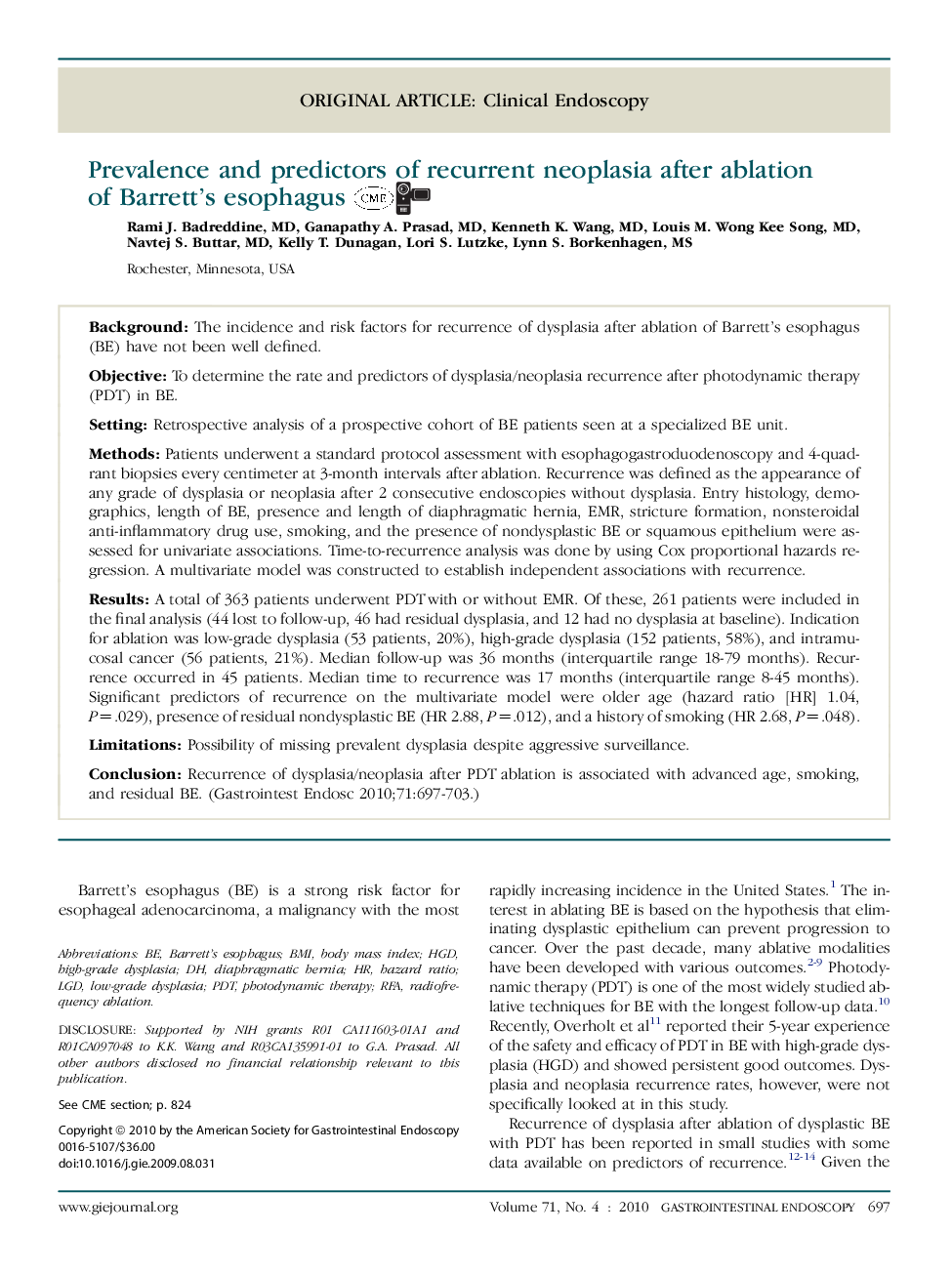| کد مقاله | کد نشریه | سال انتشار | مقاله انگلیسی | نسخه تمام متن |
|---|---|---|---|---|
| 3305633 | 1210357 | 2010 | 7 صفحه PDF | دانلود رایگان |

BackgroundThe incidence and risk factors for recurrence of dysplasia after ablation of Barrett's esophagus (BE) have not been well defined.ObjectiveTo determine the rate and predictors of dysplasia/neoplasia recurrence after photodynamic therapy (PDT) in BE.SettingRetrospective analysis of a prospective cohort of BE patients seen at a specialized BE unit.MethodsPatients underwent a standard protocol assessment with esophagogastroduodenoscopy and 4-quadrant biopsies every centimeter at 3-month intervals after ablation. Recurrence was defined as the appearance of any grade of dysplasia or neoplasia after 2 consecutive endoscopies without dysplasia. Entry histology, demographics, length of BE, presence and length of diaphragmatic hernia, EMR, stricture formation, nonsteroidal anti-inflammatory drug use, smoking, and the presence of nondysplastic BE or squamous epithelium were assessed for univariate associations. Time-to-recurrence analysis was done by using Cox proportional hazards regression. A multivariate model was constructed to establish independent associations with recurrence.ResultsA total of 363 patients underwent PDT with or without EMR. Of these, 261 patients were included in the final analysis (44 lost to follow-up, 46 had residual dysplasia, and 12 had no dysplasia at baseline). Indication for ablation was low-grade dysplasia (53 patients, 20%), high-grade dysplasia (152 patients, 58%), and intramucosal cancer (56 patients, 21%). Median follow-up was 36 months (interquartile range 18-79 months). Recurrence occurred in 45 patients. Median time to recurrence was 17 months (interquartile range 8-45 months). Significant predictors of recurrence on the multivariate model were older age (hazard ratio [HR] 1.04, P=.029), presence of residual nondysplastic BE (HR 2.88, P=.012), and a history of smoking (HR 2.68, P=.048).LimitationsPossibility of missing prevalent dysplasia despite aggressive surveillance.ConclusionRecurrence of dysplasia/neoplasia after PDT ablation is associated with advanced age, smoking, and residual BE.
Journal: Gastrointestinal Endoscopy - Volume 71, Issue 4, April 2010, Pages 697–703